Monitoring Growth and Maturation
Growth and maturation monitoring has become an invaluable tool for the development of youth athletes worldwide. Research in the area is helping to level the playing field for youth athletes in top organisations such as the English Premier League, the Lawn Tennis Association, Major League Baseball and many national sports bodies.
In these organisations, growth and maturation monitoring has been successfully implemented to:
- Improve their talent identification by overcoming selection biases
- Maximize the development of their youth athletes to help them become the sports stars of tomorrow
- Reduce the risk of overuse and growth-related injury
With RYPT, you can simplify your data capture and ensure that your data is stored securely in compliance with GDPR.
Developed with world-leading researchers, RYPT ensures the accuracy of the underlying models that can be lost when using spreadsheets to manage this data over time. Allowing you to be confident in using your growth and maturation data to make decisions about the management and development of your youth athletes.
RYPT's growth and maturation dashboard automates reporting to give you immediate insights into your athletes' maturity status, maturity timing, growth rates, and more. Visualizing the data to help you communicate it with other coaches on your team, and the athlete’s parents, so together you can drive the best outcomes for the athlete.
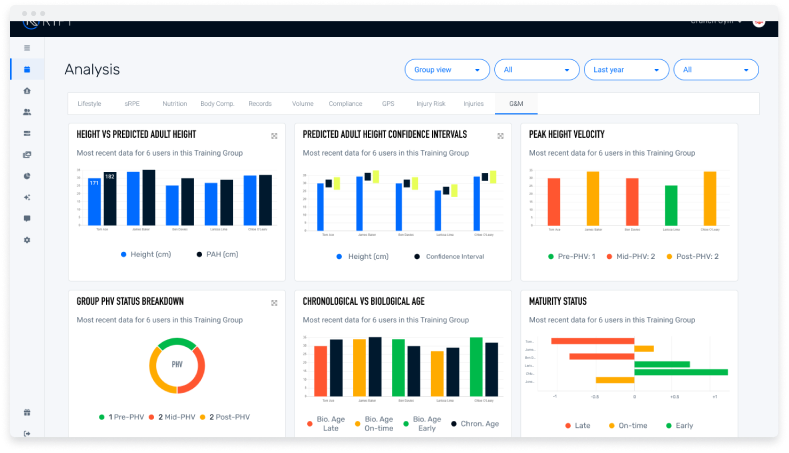
Capturing Data
Capturing Parents' Heights in the RYPT app
In the RYPT app, when the athlete is under the age of 18, the option to record their parents' heights in the profile as shown in the video below. Once parents' heights have been recorded they are editable via the app for 24 hours in case of an error, but after that they are locked and cannot be edited by the athlete. This is to prevent any bad data being entered.
Parents' heights can also be recorded by the coach via the RYPT platform, as shown below, if they have been submitted by the parents by another means, or if you have brought the parents in to be measured on an induction day.
When calculating Perdicted Adult Height, and allowance is made for parents' heights that are submitted by the parents themselves as people tend to slightly overstate their height. When measured by the coach, the exact values are used for the calculation.
Capturing Assessment Data
The athlete's growth and maturation assessment data is captured by the coach via the Growth and Maturation Dashboard in the Analysis section. To add data you click on the Add Test Data button and set up your test by adding the:
- Assessment Name / to help you identify it later in case you need to edit it or delete it
- Assessemnt Date / that the data will be saved to
- Measurement System / Metric or Imperial
- Number of Height Measurements / you can decide to record one or two height measurements for each athlete
- Athletes Assessed / the athletes to include in your assessment
Once your assessment is set up you'll be presented with a table to enter the athletes' body weight and height. The table also includes their DOB and Gender, as well as their parents' heights. These can all be edited if necessary.
Interpreting the Data
Once the data has been saved, it will appear in the G&M Dashboard in the Analysis section. Here you can generate group reports to get an overview of all your athletes, or individual reports to provide feedback to the athlete and their parents. The reports include the following insights:
Predicted Adult Height (PAH)
Using the athlete's parent's heights, RYPT calculates their predicted adult height. Predicted Adult Height is a valuable tool used to estimate the future height of young athletes. This can then be compared with the athlete’s current height to see where the athlete is in relation to their future growth potential.
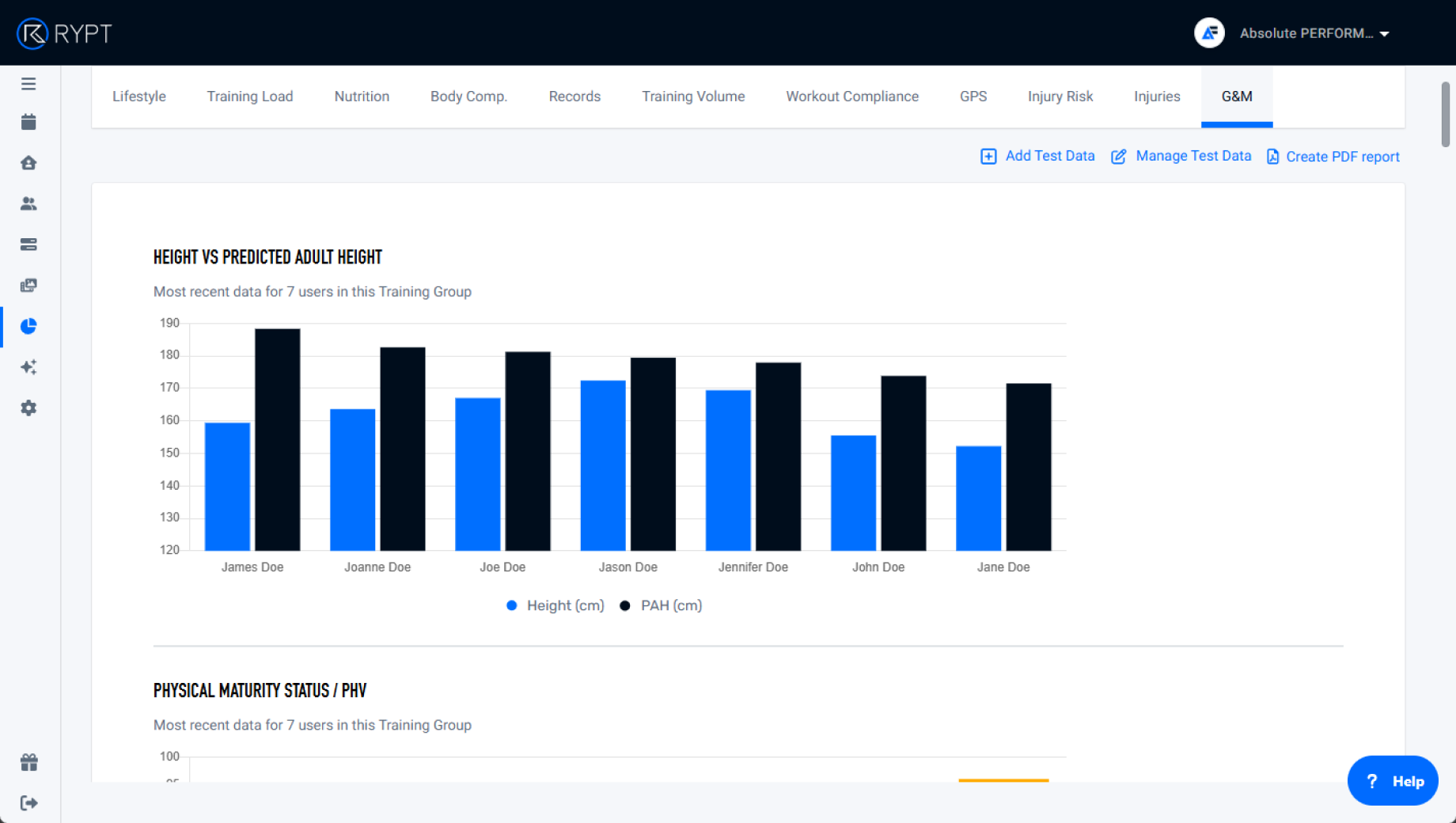
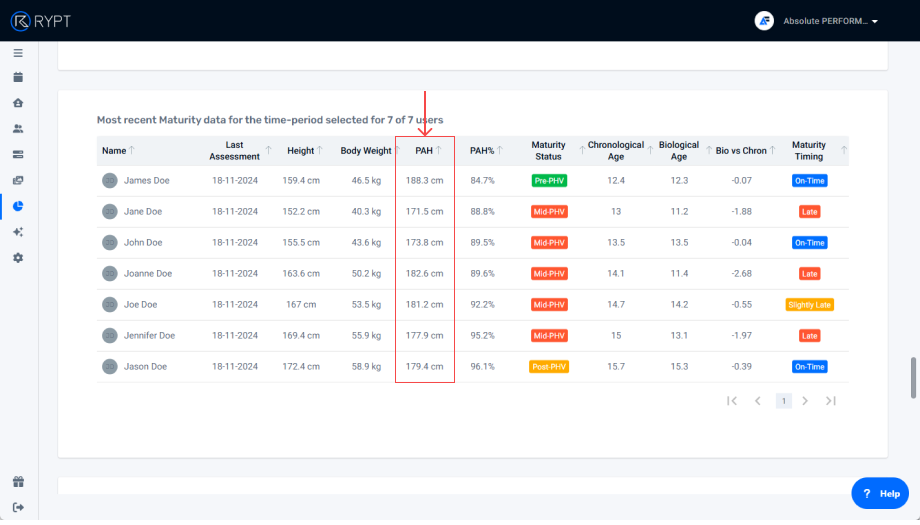
PAH Confidence Intervals
RYPT also uses statistical models to calculate predicted adult height ranges at 50% and 90% confidence intervals.
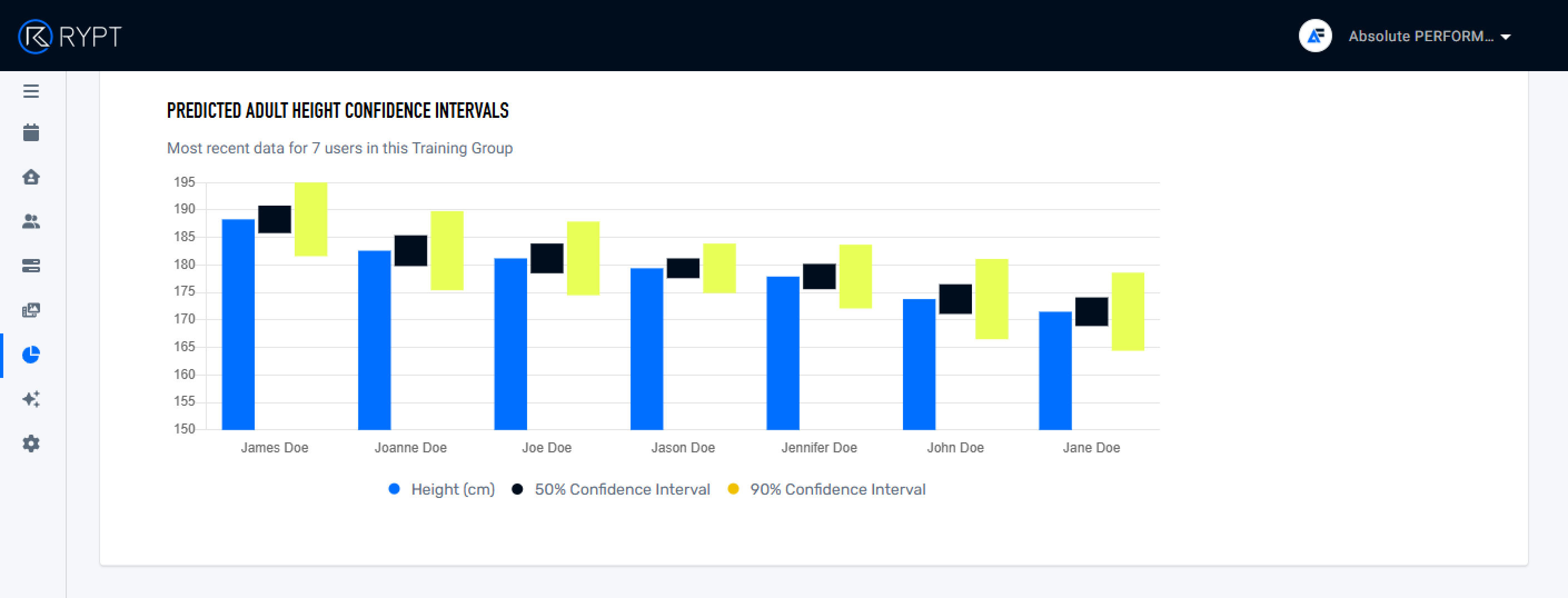
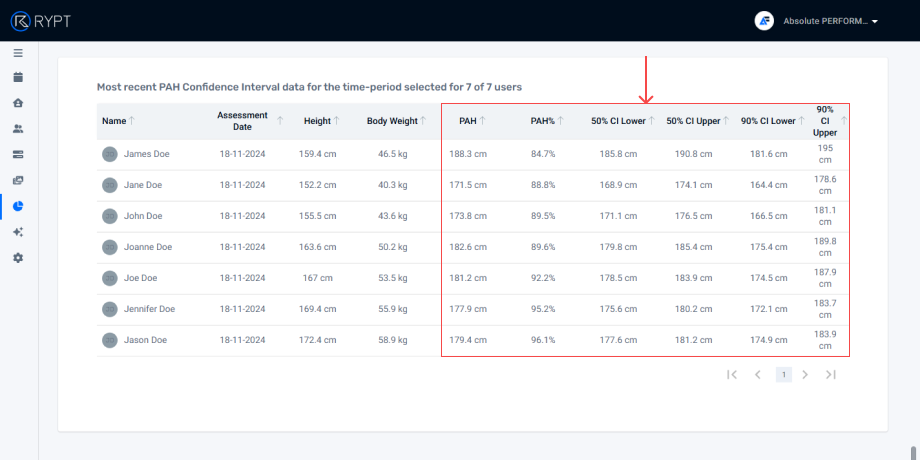
Physical Maturity Status / Peak Height Velocity
Peak Height Velocity (PHV) refers to the period during which adolescents experience their fastest growth spurt. Identifying PHV is crucial as it marks a phase of significant physical change, impacting coordination, strength, and injury risk.
Using the athlete's current height from their assessment and their predicted adult height, RYPT calculates what percentage of their predicted adult height (PAH%) they have reached. Using PAH%, RYPT determines whether the athlete is Pre-PHV, Mid-PHV, or Post-PHV.
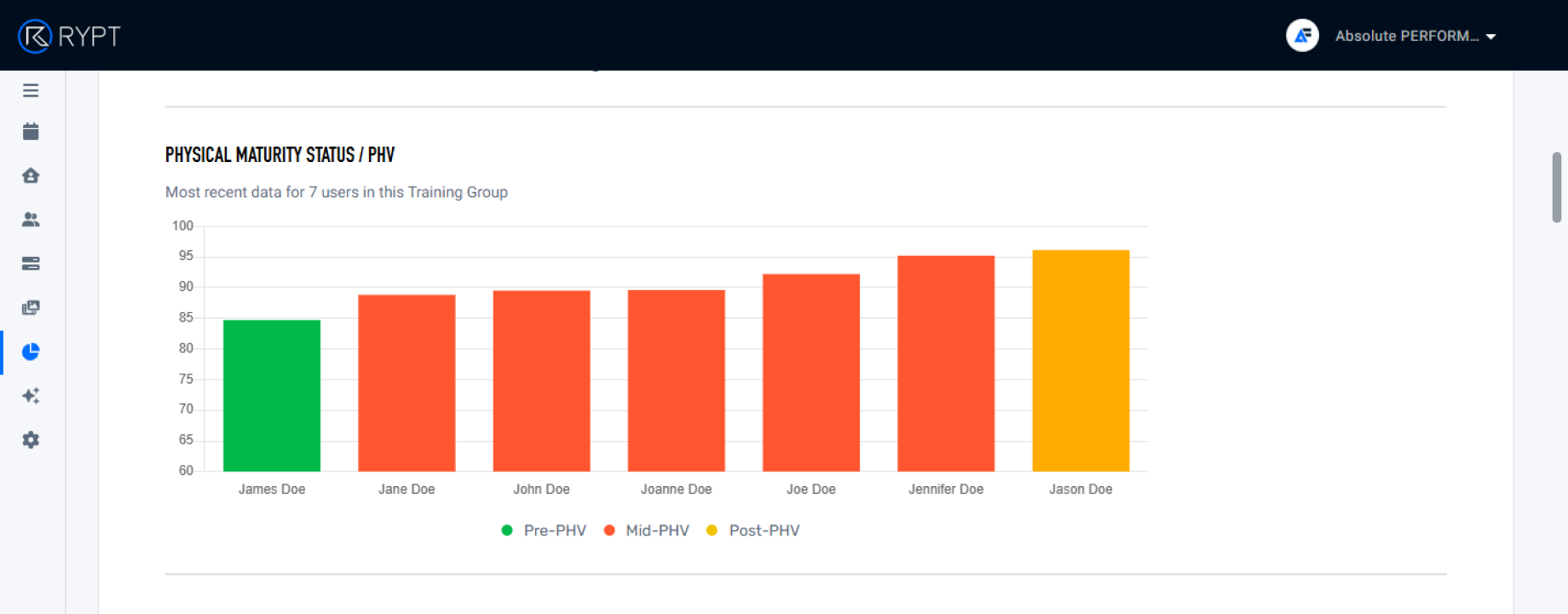
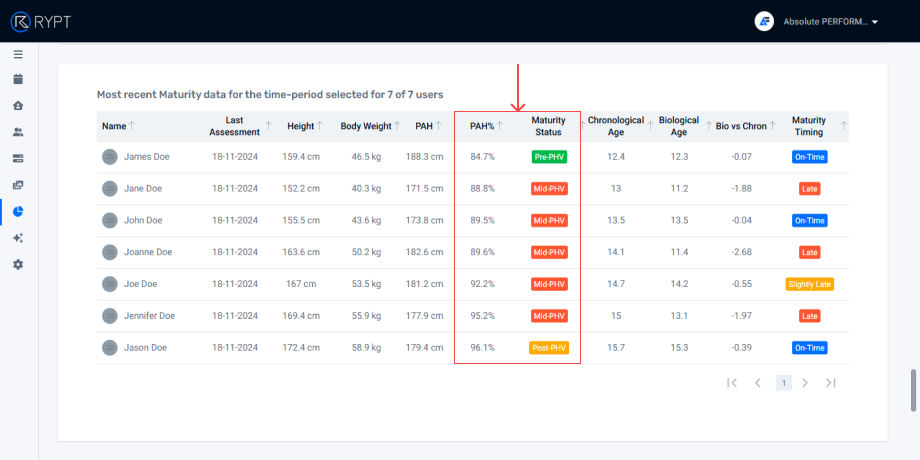
Using PHV to Tailor Training Programs
Studies suggest that there are certain times, pre-, mid-, and post-PHV, when youth athletes are more sensitive to particular types of training and that adaptations can be maximized if the athlete’s program is tailored to their biological age or maturity.
For example, it’s suggested that pre-adolescents benefit more from training that includes high levels of neural activation, such as sprint training and plyometrics. Whereas, adolescents respond better to training that targets both neural and structural development, such as combining strength training and plyometrics (Rumpf et al., 2012).
Furthermore, adolescents are understood to respond more favourably to hypertrophy training than pre-adolescents due to the higher concentrations of testosterone and growth hormone (Malina et al., 2004), (Viru et al., 1999).
Growth Rate
RYPT also tracks the athlete's growth rate, body weight and height, between assessments, so when you record multiple assessments you'll begin to see their growth rate data in the dashboard.
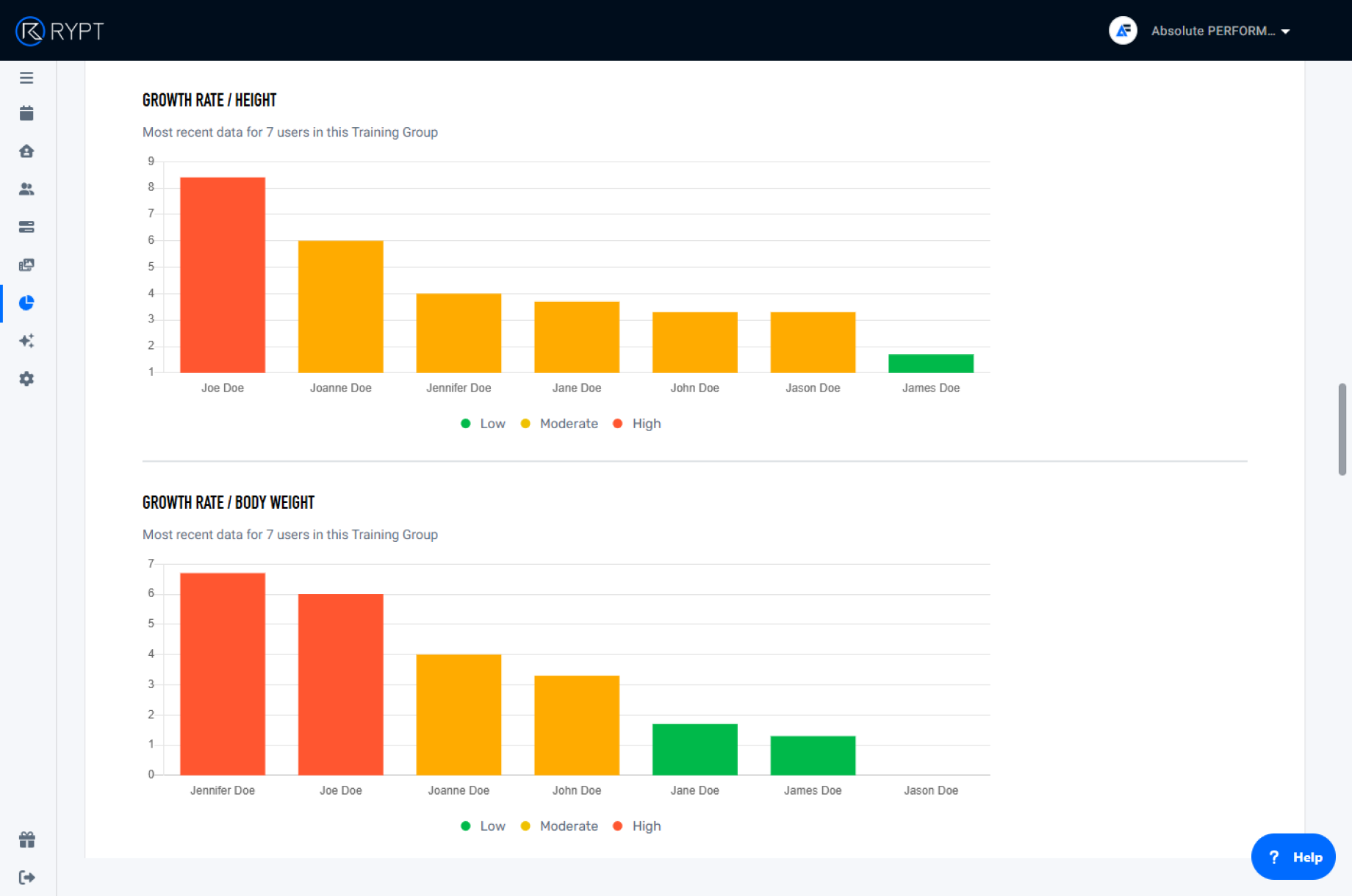
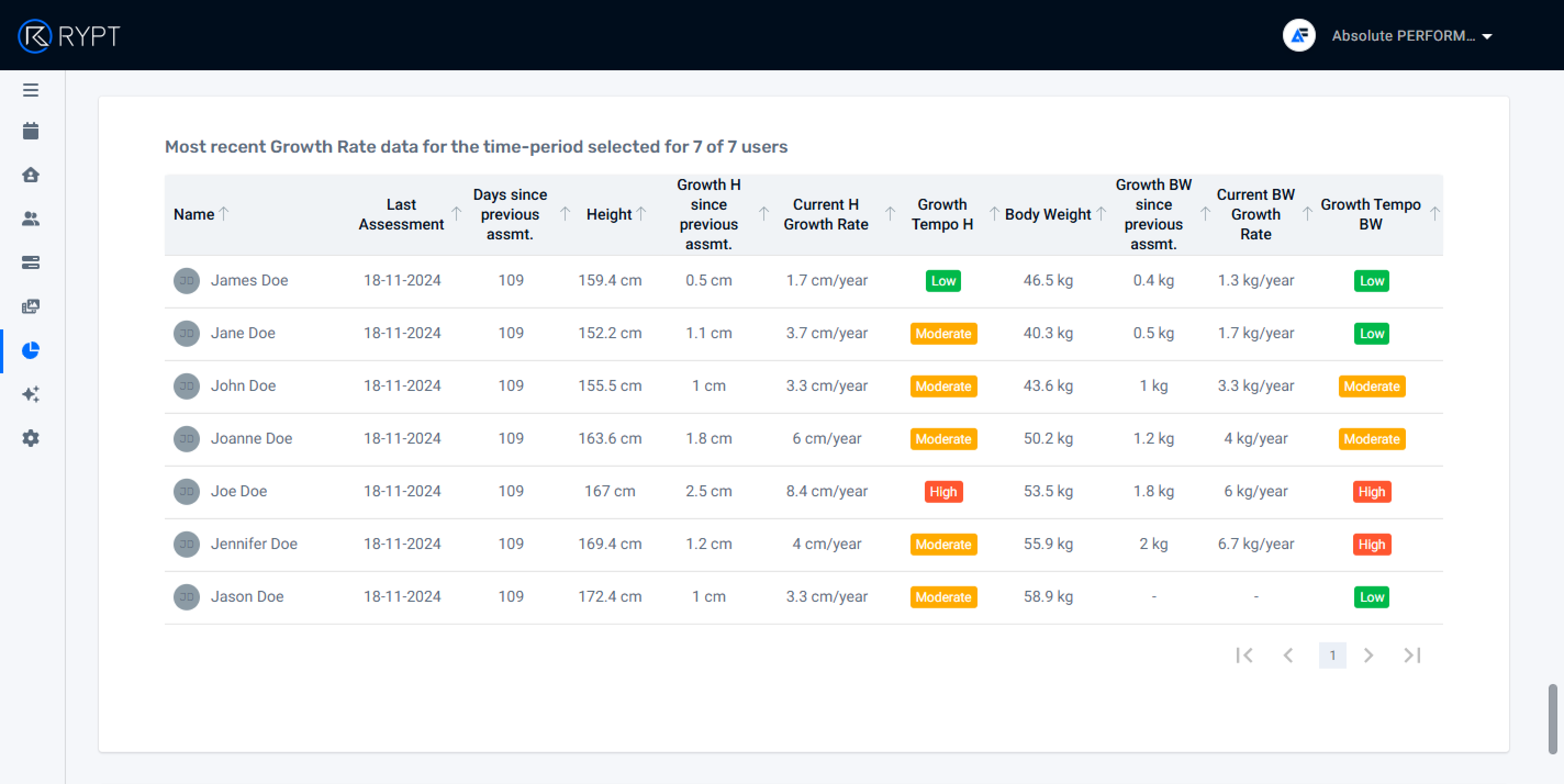
Peak Height Velocity, Growth Rate, and Injury Risk
PHV is not only a marker of growth but also a critical period for managing injury risk. During their growth spurt, adolescents experience changes in bone density, muscle strength, and coordination. As a result, athletes who are mid-PHV have been associated with having a significantly higher risk of injury, compared with pre and post-PHV athletes (Monasterio et al., 2023).
Growth rates are also an important factor. Growth rates greater than 7.2 cm/year in males and 6.7 cm/year in females, or greater than 6 kg/year in males, or 5.5 kg/year in females are associated with increased injury risk (Monasterio et al., 2024).
Monitoring growth rates and timing of PHV allows coaches to adjust training loads and implement injury prevention strategies. A study found that understanding growth spurts can help in tailoring training programs to reduce the risk of overuse injuries in young athletes (Philippaerts et al., 2006).
Physical Maturity Timing
RYPT uses the athlete's PHV to calculate an athlete’s biological age and determine whether they are a late, on-time, or early maturer. This can help with talent identification to ensure that biases towards early developers who are more physically imposing than their late developer peers are identified. Ensuring late developers, who are potentially better psychologically, technically, or tactically, are not overlooked.
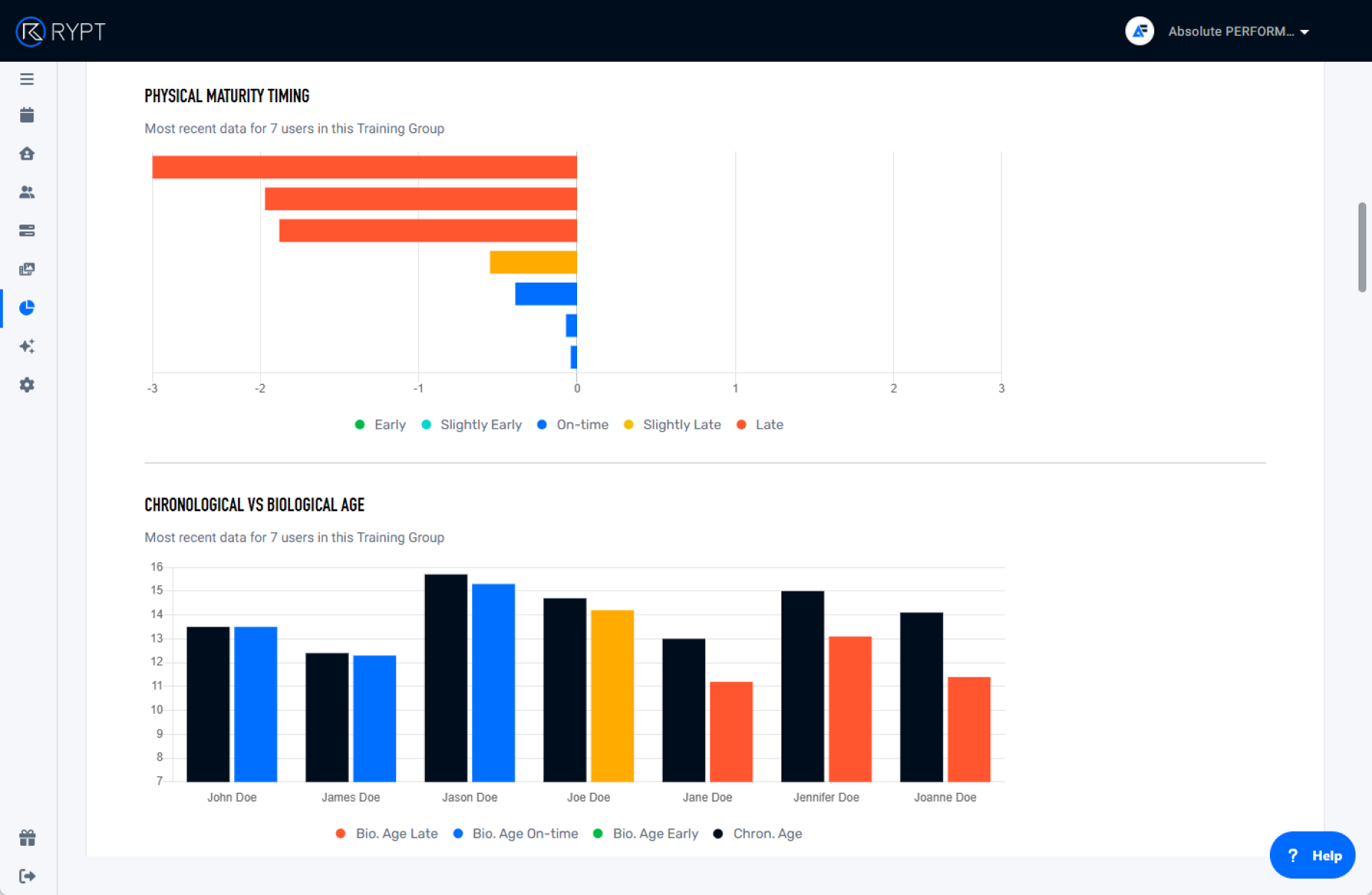
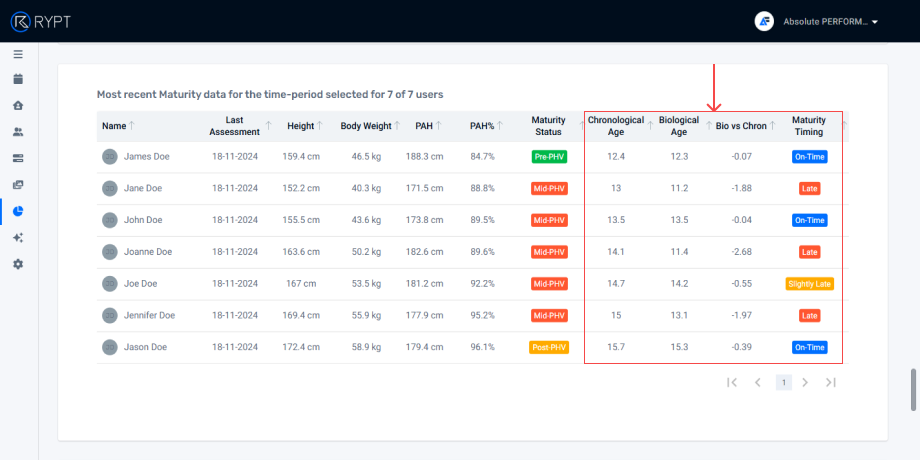
Using Bio-banding to Maximize Development
Maturity Timing can also be utilised to maximise the development of youth athletes, by using bio-banding to group them by their biological as opposed to their chronological age. This levels the playing field for all athletes, helping late developers improve by getting more involvements in games, and helping early developers improve their skills rather than relying solely on their physical attributes.
